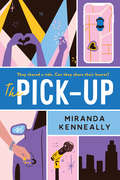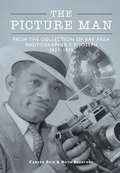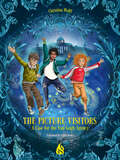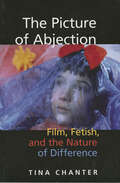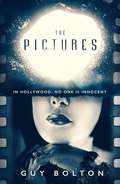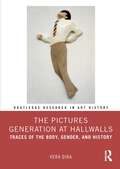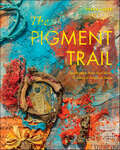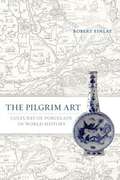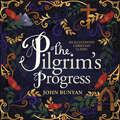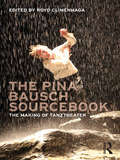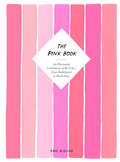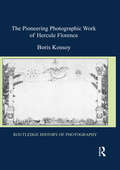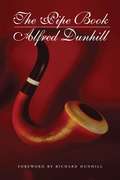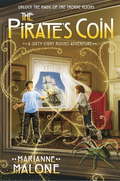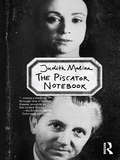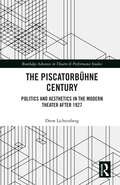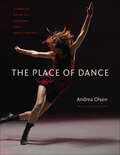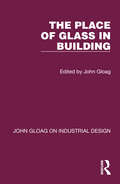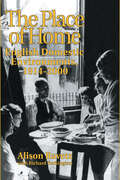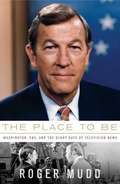- Table View
- List View
The Pick-Up
by Miranda KenneallyMeeting a gorgeous guy in a rideshare headed to Lollapalooza is not how Mari expected her Chicago summer to start. She doesn't believe in dating...but TJ may just change her mind. Can an electric, weekend romance turn into more than just a summer fling?When Mari hails a Ryde to a music festival, the last thing she expects is for the car to pick up a gorgeous guy along the way. Mari doesn't believe in dating—it can only end with a broken heart. Besides, she's only staying at her dad's house in Chicago for the weekend. How close can you get to a guy in three days?TJ wants to study art in college, but his family's expectations cast a long shadow over his dreams. When he meets Mari in the back of a rideshare, he feels alive for the first time in a long time.Mari and TJ enter the festival together and share an electric moment but get separated in a crowd with seemingly no way to find each other. When fate reunites them (with a little help from a viral hashtag), they'll have to decide: was it love at first sight, or the start of nothing more than a weekend fling?
The Picture Man: From the Collection of Bay Area Photographer E.F. Joseph 1927–1979
by Ruth Beckford Carith ReidExplore the Black history of the San Francisco Bay Area through the work of the region’s first Black professional photographer.From 1927 until his death in 1979, Oakland’s E.F. Joseph documented the daily lives of African Americans in the Bay Area. His images were printed in the Pittsburgh Courier and the Chicago Defender but not widely published in his home community. A graduate of the American School of Photography in Illinois, Joseph photographed the likes of such celebrities and activists as Josephine Baker, Mahalia Jackson, Mary McLeod Bethune, and Thurgood Marshall. However, what is perhaps more compelling within these pages are the countless images of everyday citizens—teaching, entertaining, worshipping, working, and serving their community and their nation.
The Picture Not Taken: On Life and Photography
by Benjamin SwettAn ecologically minded collection of essays in the vein of Rebecca Solnit and Susan Sontag, covering everything from the equipment of photography to the difficulties of perception itself.In The Picture Not Taken, the photographer and writer Benjamin Swett considers the intersections between photography, memory, the natural world, and the course of life in essays on subjects that include family snapshots, images of racial violence, the shape of abiding love, and the experience of unforseen and irremediable loss. In these beautifully written, deeply affecting pages, Swett moves with a wonderful improvisatory freedom among his chosen themes. The Picture Not Taken is a book of transfixing pieces that possesses the intensity and integrity and heft of the wholly new.
The Picture Visitors: A Case for the Van Gogh Agency
by Christina WolffThirteen-year-old Vincent has a very special talent: He can jump into paintings and move around inside them! When the painting The Thunderstorm by an old Dutch painter is stolen from a London mansion, Vincent decides to track it down. During his search, to his great surprise, he meets Holly, who can dive into paintings just like him. The two make a bet: Whoever finds The Thunderstorm first wins! Vincent is sure that he will be faster than Holly, but the search turns out to be unexpectedly difficult. And suddenly something is also wrong with Vincent van Gogh's Starry Night. Why is it that when Vincent jumps into it, the painting feels like a fake?
The Picture of Abjection: Film, Fetish, and the Nature of Difference
by Tina Chanter“A timely and important project that changes our understanding of the role of abjection both in cultural politics and in the structure of film.” —Ewa Ziarek, State University of New York at BuffaloTina Chanter resolves a fundamental problem in film theory by negotiating a middle path between “gaze theory” approaches to film and spectator studies or cultural theory approaches that emphasize the position of the viewer and thereby take account of race, class, gender, and sexuality. Chanter argues that abjection is the unthought ground of fetishistic theories. If the feminine has been the privileged excluded other of psychoanalytic theory, fueled by the myth of castration and the logic of disavowal, when fetishism is taken up by race theory, or cultural theory, the multiple and fluid registers of abjection are obscured. By mobilizing a theory of abjection, the book shows how the appeal to phallic, fetishistic theories continues to reify the hegemonic categories of race, class, sexuality, and gender, as if they stood as self-evident categories.“An intriguing read, especially for those who favor psychological models of criticism in film theory . . . Recommended.” —Choice
The Pictures (Detective Craine Ser. #1)
by Guy Bolton*Shortlisted for the John Creasey (New Blood) Dagger Award 2017* World-weary Jonathan Craine is a detective at the LAPD who has spent his entire career as a studio &‘fixer&’, covering up crimes of the studio players to protect the billion-dollar industry that built Los Angeles. When one of the producers of The Wizard of Oz is found dead under suspicious circumstances, Craine must make sure the incident passes without scandal and that the deceased&’s widow, the beautiful starlet Gale Goodwin, comes through the ordeal with her reputation unscathed. But against his better instincts, Craine finds himself increasingly drawn to Gale. And when a series of unsavoury truths begin to surface, Craine finds himself at the centre of a conspiracy involving a Chicago crime syndicate, a prostitution racket and a set of stolen pictures that could hold the key to unravelling the mystery.
The Pictures Generation at Hallwalls: Traces of the Body, Gender, and History (Routledge Research in Art History)
by Vera DikaIn this book, Vera Dika rewrites the story of the Pictures Generation from the perspective of the Hallwalls Contemporary Arts Center in Buffalo, NY. Her work is based on interviews with living artists, archival research, and personal collections, including films, videotapes, and sound recordings. At once aesthetic, cultural, and political, this renewed perspective asks new questions and rewrites past assumptions about the artists’ work. The legendary members of the East Coast Pictures Generation emerged at Hallwalls Contemporary Art Center in Buffalo in the mid-1970s. These young people had started Hallwalls, an artist-run organization that invited artists from a variety of mediums to show their work. It also featured productions by the founding members themselves: Robert Longo, Charles Clough, Cindy Sherman, Nancy Dwyer, and Michael Zwack. The works discussed in the volume include performance, video, films, painting, music, and literature, and have been chosen because of the way they foreground states of the body in relationship to conditions of their medium. As a distinguishing feature of Hallwalls artists’ work, the practice uses these traces to make metaphors on the process of mechanical reproduction itself. The Hallwalls artists’ work also gives testament to Buffalo and to New York City, the cities that formed their historical contexts. This book will be of interest to scholars working in art history, performance studies, film studies, and gender studies.
The Picturesque: Architecture, Disgust and Other Irregularities (The Classical Tradition in Architecture)
by John MacarthurIn this fresh and authoritative account John Macarthur presents the eighteenth century idea of the picturesque – when it was a risky term concerned with a refined taste for everyday things, such as the hovels of the labouring poor – in the light of its reception and effects in modern culture. In a series of linked essays Macarthur shows: what the concept of picture does in the picturesque and how this relates to modern theories of the image how the distaste that might be felt today at the sentimentality of the picturesque was already at play in the eighteenth century how visual values such as ‘irregularity’ become the basis of modern architectural planning; how the concept of appropriating a view moves from landscape design into urban design why movement is fundamental to picturing the stillness of buildings, cities and landscapes. Drawing on examples from architecture, art and broader culture, John Macarthur's account of this key topic in cultural history, makes engaging reading for all those studying architecture, art history, cultural history or visual studies.
The Pigment Trail: Inspiration from the Colors, Textures, and People of India
by Debra LukerHoping for Foreword by Tricia Guild (British designer, OBE, and the founder and Creative Director of Designers Guild, the international home and lifestyle company with a store and showroom on the Kings Road and Marylebone High Street in London, and offices in London with showrooms in Paris, Munich, Stockholm and New York.) Demand is high for exotic armchair travel from the safety of home. India's mystique to Westerners continues, esp for artistic inspiration.
The Pilgrim Art: Cultures of Porcelain in World History
by Robert FinlayThe Pilgrim Art explores the remarkable cultural influence of Chinese porcelain around the globe. Cobalt ore was shipped from Persia to China in the fourteenth century, where it was used to decorate porcelain for Muslims in Southeast Asia, India, Persia, and Iraq.
The Pilgrim's Progress: An Illustrated Christian Classic
by John BunyanThe Pilgrim&’s Progress has inspired readers across the centuries to persevere in their faith. For longstanding fans of Bunyan&’s tale, or for those encountering it for the first time, this illustrated edition offers new beauty and insight with striking hand-painted illustrations and enlightening commentary for all ages. Inside you&’ll find:15 chapters, accompanied by gorgeous hand-painted scenes at the beginning of each chapterannotations embedded across every chapter to help readers gain a deeper understanding of the allegorya presentation page for thoughtful gifting and a notes section to write down your thoughtsa ribbon marker for easy referencingcolorful artwork throughout the entire bookOriginally written for the everyman, John Bunyan's Christian classic has since found its way into the libraries of scholars and universities as well—a true masterpiece for the ages. Its historical richness, eloquent symbolism, and stunning prose have withstood the test of time, and this new edition helps readers appreciate the timeless beauty found in Bunyan&’s words.The Pilgrim&’s Progress is perfect for:homeschooling families or an addition to your family librarymen, women, and children who enjoy learning about historySince its publication in 1678, The Pilgrim&’s Progress has been translated into more than 200 languages. It's a worldwide bestseller, second only to the Bible, and it has become a hallmark among scholars and theologians around the globe.
The Pina Bausch Sourcebook: The Making of Tanztheater
by Royd ClimenhagaPina Bausch’s work has had tremendous impact across the spectrum of late twentieth-century performance practice, helping to redefine the possibilities of what both dance and theater can be. This edited collection presents a compendium of source material and contextual essays that examine Pina Bausch's history, practice and legacy, and the development of Tanztheater as a new form, with sections including: Dance and theatre roots and connections; Bausch’s developmental process; The creation of Tanztheater; Bausch’s reception; Critical perspectives. Interviews, reviews and major essays chart the evolution of Bausch’s pioneering approach and explore this evocative new mode of performance. Edited by noted Bausch scholar, Royd Climenhaga, The Pina Bausch Sourcebook aims to open up Bausch’s performative world for students, scholars, dance and theatre artists and audiences everywhere.
The Ping-Pong Queen of Chinatown
by Andrew YangPerfect for fans of Ben Philippe and Mary H. K. Choi, this charming, insightful YA novel follows two high school students who form a complicated, ground-shifting bond while filming a movie.High school junior Felix Ma wants to prove to his parents that he’s not a quitter. After crashing out of piano lessons and competitive ping-pong, Felix starts a film club at his school in a last-ditch attempt to find a star extracurricular for his college applications.Then he meets Cassie Chow, a bubbly high school senior who shares Felix’s anxieties about the future and complicated relationship with parental expectations. Felix feels drawn to Cassie for reasons he can’t quite articulate, so as an excuse to see her more, he invites Cassie to star in his short film.The project starts out as a lighthearted mockumentary. But at the urging of Felix’s college admissions coach, who wants to turn the film into essay material, it soon morphs into a serious drama about the emotional scars that parents leave on their kids. As Felix and Cassie uncover their most painful memories, Cassie starts to balk at opening her wounds for the camera.With his parents and college admissions coach hot on his heels, Felix discovers painful truths about himself and his past—and must decide whether pleasing his parents is worth losing his closest friend.
The Pink Book: An Illustrated Celebration of the Color, from Bubblegum to Battleships
by Kaye BlegvadWhat do we think of when we think pink? In this richly illustrated homage to the color, artist Kaye Blegvad explores its significance across history and cultures, from gender connotations to product marketing, symbols and iconography, and more. Through engaging mini essays, interactive exercises, object studies, and interviews, readers will learn about a vibrant miscellany of pink facts and pink occurrences: like iconic applications of the color, from Elvis's cars to cotton candy; or the etymology of phrases like "tickled pink," "pink slip," or "rose-tinted glasses." This ebook will captivate those with a passion for pink and anyone with a curiosity about color.
The Pinter Ethic: The Erotic Aesthetic (Studies in Modern Drama #Vol. 2237)
by Penelope PrenticeFirst published in 2000. Routledge is an imprint of Taylor & Francis, an informa company.
The Pioneering Photographic Work of Hercule Florence (Routledge History of Photography)
by Boris KossoyThis book delivers an in-depth analysis of Hercule Florence, who is virtually unknown despite being among the world’s photographic pioneers. Based on the texts of various manuscripts, letters, diaries, notes, and advertisements, this book answers numerous questions surrounding Florence’s work, including the materials, methods, and techniques he employed and why it took more than a century for his discovery to come to light. Kossoy’s groundbreaking research establishes Florence’s use of "photographie" to describe the product of his experiments, half a decade before Sir John Herschel recommended "photography" to Henry Fox Talbot. This book aims to change the fact that despite its cultural and historical importance, Florence’s photographic breakthrough remains largely unknown in the English-speaking world.
The Pipe Book: A Guide To Nearly Every Pipe Created
by Alfred DunhillAs a successful London tobacconist in the early 1900s, Alfred Dunhill’s passion for his field led him to begin collecting pipes from all over the world. From his collection he created The Pipe Book, which was first printed in 1924 and has rarely been out of print since. The book is a thorough exploration of every type of pipe—primitive mounds and earthen pipes; more elegant models of ivory, clay, and porcelain; and of course modern briers, cobs, and meerschaums—with in-depth explanations of their uses, structures, and origins, as well as fascinating anthropological discussions on smoking in various cultures.
The Pirate's Coin: A Sixty-Eight Rooms Adventure
by Greg Call Marianne MaloneSixth graders Jack and Ruthie return in their third adventure in the Art Institute of Chicago's magical Thorne Rooms! During a school presentation, Ruthie and Jack discover that their classmate Kendra is descended from Phoebe Monroe, the young slave they befriended when they traveled to 19th-century South Carolina. Kendra tells them that long ago her family lost their good name and their business selling herbal remedies when mobsters accused them of stealing the recipes! Only Ruthie and Jack know the truth--because only they know about the secret ledger that Phoebe wrote the recipes in long ago! Ruthie and Jack's mission to clear Kendra's name takes them back to the Thorne Rooms, where a mysterious old coin leads them to 1753 Cape Cod and to Jack's own ancestor . . . the pirate Jack Norfleet! But playing with history can be dangerous! Suddenly, Jack's very existence is in jeopardy! Can Ruthie and Jack find the proof they need to help Kendra? And can they fix the past and save Jack's future . . . before it's too late?
The Piscator Notebook
by Judith Malina'Theater legend Malina has written one of the most interesting studies of the avant-garde theatrical movement published in the last several years.' – CHOICE Judith Malina and The Living Theatre have been icons of political theatre for over six decades. What few realise is that she originally studied under one of the giants of twentieth century culture, Erwin Piscator, in his Dramatic Workshop at The New School in New York. Piscator founded the Workshop after emigrating to New York, having collaborated with Brecht to create "epic theatre" in Germany. The Piscator Notebook documents Malina’s intensive and idiosyncratic training at Piscator’s school. Part diary, part theatrical treatise, this unique and inspiring volume combines: complete transcriptions of Malina’s diaries from her time as a student at the Dramatic Workshop, as well as reproductions of various of Piscator’s syllabi and teaching materials; notes on Malina’s teachers, fellow students – including Marlon Brando and Tennessee Williams – and New School productions; studies of Piscator’s process and influence, along with a new essay on the relationship between his teaching, Malina’s work with the Living Theatre and "The Ongoing Epic"; an introduction by performance pioneer, Richard Schechner. The Piscator Notebook is a compelling record of the genealogy of political theatre practice in the early 20th Century, from Europe to the US. But it is also a stunningly personal reflection on the pleasures and challenges of learning about theatre, charged with essential insights for the student and teacher, actor and director. 'Piscator is the greatest theatre man of our time.' – Bertolt Brecht
The Piscatorbühne Century: Politics and Aesthetics in the Modern Theater After 1927 (Routledge Advances in Theatre & Performance Studies)
by Drew LichtenbergThis study of the Piscatorbühne season of 1927–1928 uncovers a vital, previously neglected current of radical experiment in modern theater, a ghost in the machine of contemporary performance practices. A handful of theater seasons changed the course of 20th- and 21st-century theatre. But only the Piscatorbühne of 1927–1928 went bankrupt in less than a year. This exploration tells the story of that collapse, how it predicted the wider collapse of the late Weimar Republic, and how it relates to our own era of political polarization and economic instability. As a wider examination of Piscator’s contributions to dramaturgical and aesthetic form, The Piscatorbühne Century makes a powerful and timely case for the renewed significance of the broader epic theater tradition. Drawing on a rich archive of interwar materials, Drew Lichtenberg reconstructs this germinal nexus of theory and praxis for the modern theatre. This book will be of great interest to students and scholars in theatre, performance, art, and literature.
The Place of Dance: A Somatic Guide to Dancing and Dance Making
by Andrea Olsen Caryn McHoseThe Place of Dance is written for the general reader as well as for dancers. It reminds us that dancing is our nature, available to all as well as refined for the stage. Andrea Olsen is an internationally known choreographer and educator who combines the science of body with creative practice. This workbook integrates experiential anatomy with the process of moving and dancing, with a particular focus on the creative journey involved in choreographing, improvising, and performing for the stage. Each of the chapters, or "days," introduces a particular theme and features a dance photograph, information on the topic, movement and writing investigations, personal anecdotes, and studio notes from professional artists and educators for further insight. The third in a trilogy of works about the body, including Bodystories: A Guide to Experiential Anatomy and Body and Earth: An Experiential Guide, The Place of Dance will help each reader understand his/her dancing body through somatic work, create a dance, and have a full journal clarifying aesthetic views on his or her practice. It is well suited for anyone interested in engaging embodied intelligence and living more consciously.Publication of this book is funded by the Beatrice Fox Auerbach Foundation Fund at the Hartford Foundation for Public Giving.
The Place of Glass in Building (John Gloag On Industrial Design Ser.)
by John GloagOriginally published in 1943, The Place of Glass in Building is a comprehensive and compact survey of the structural uses of glass in 20th Century architecture. It gives the facts about the physical properties, the possibilities and the limitations of the glass in common use. It also deals with the attributes of specialised and decorative glass and provides detailed descriptions of the principal types which were manufactured in the UK. Intended for architectural students it may also be of interest to architects, for it is a condensed survey of the progress that has been made in this structural and decorative material.
The Place of Home: English domestic environments, 1914-2000 (Planning, History and Environment Series)
by Alison Ravetz Professor Alison Ravetz R. TurkingtonA comprehensive and in-depth history of the 20th century English home, how it has been created, and how it works for people. It focuses on the various influences bearing on the development of domestic space since 1914 and covers both design and housing policy. Current debates from participation to co-operative housing are examined and several themes not previously brought together are linked, e.g. urban development/house design; technology at home/women and home; social meaning of home.
The Place of Many Moods: Udaipur’s Painted Lands and India’s Eighteenth Century
by Dipti KheraA look at the painting traditions of northwestern India in the eighteenth century, and what they reveal about the political and artistic changes of the eraIn the long eighteenth century, artists from Udaipur, a city of lakes in northwestern India, specialized in depicting the vivid sensory ambience of its historic palaces, reservoirs, temples, bazaars, and durbars. As Mughal imperial authority weakened by the late 1600s and the British colonial economy became paramount by the 1830s, new patrons and mobile professionals reshaped urban cultures and artistic genres across early modern India. The Place of Many Moods explores how Udaipur’s artworks—monumental court paintings, royal portraits, Jain letter scrolls, devotional manuscripts, cartographic artifacts, and architectural drawings—represent the period’s major aesthetic, intellectual, and political shifts. Dipti Khera shows that these immersive objects powerfully convey the bhava—the feel, emotion, and mood—of specific places, revealing visions of pleasure, plenitude, and praise. These memorialized moods confront the ways colonial histories have recounted Oriental decadence, shaping how a culture and time are perceived.Illuminating the close relationship between painting and poetry, and the ties among art, architecture, literature, politics, ecology, trade, and religion, Khera examines how Udaipur’s painters aesthetically enticed audiences of courtly connoisseurs, itinerant monks, and mercantile collectives to forge bonds of belonging to real locales in the present and to long for idealized futures. Their pioneering pictures sought to stir such emotions as love, awe, abundance, and wonder, emphasizing the senses, spaces, and sociability essential to the efficacy of objects and expressions of territoriality.The Place of Many Moods uncovers an influential creative legacy of evocative beauty that raises broader questions about how emotions and artifacts operate in constituting history and subjectivity, politics and place.
The Place to Be: Washington, CBS, and the Glory Days of Television News
by Roger MuddFamed journalist and broadcast anchor Roger Mudd recounts his days with CBS and how that news bureau operated during its heady days as a global information leader. From the congressional debate during the passing of the 1964 Civil Rights Act to Mudd's departure from CBS in 1980, he offers an insider's glimpse into the political events of the last half of the twentieth century with an informative, episodic narrative structure. Mudd offers equal doses of humor and meaning with each story of this memoir, which should appeal to anyone who has followed his career through the decades. Annotation ©2008 Book News, Inc., Portland, OR (booknews.com)
